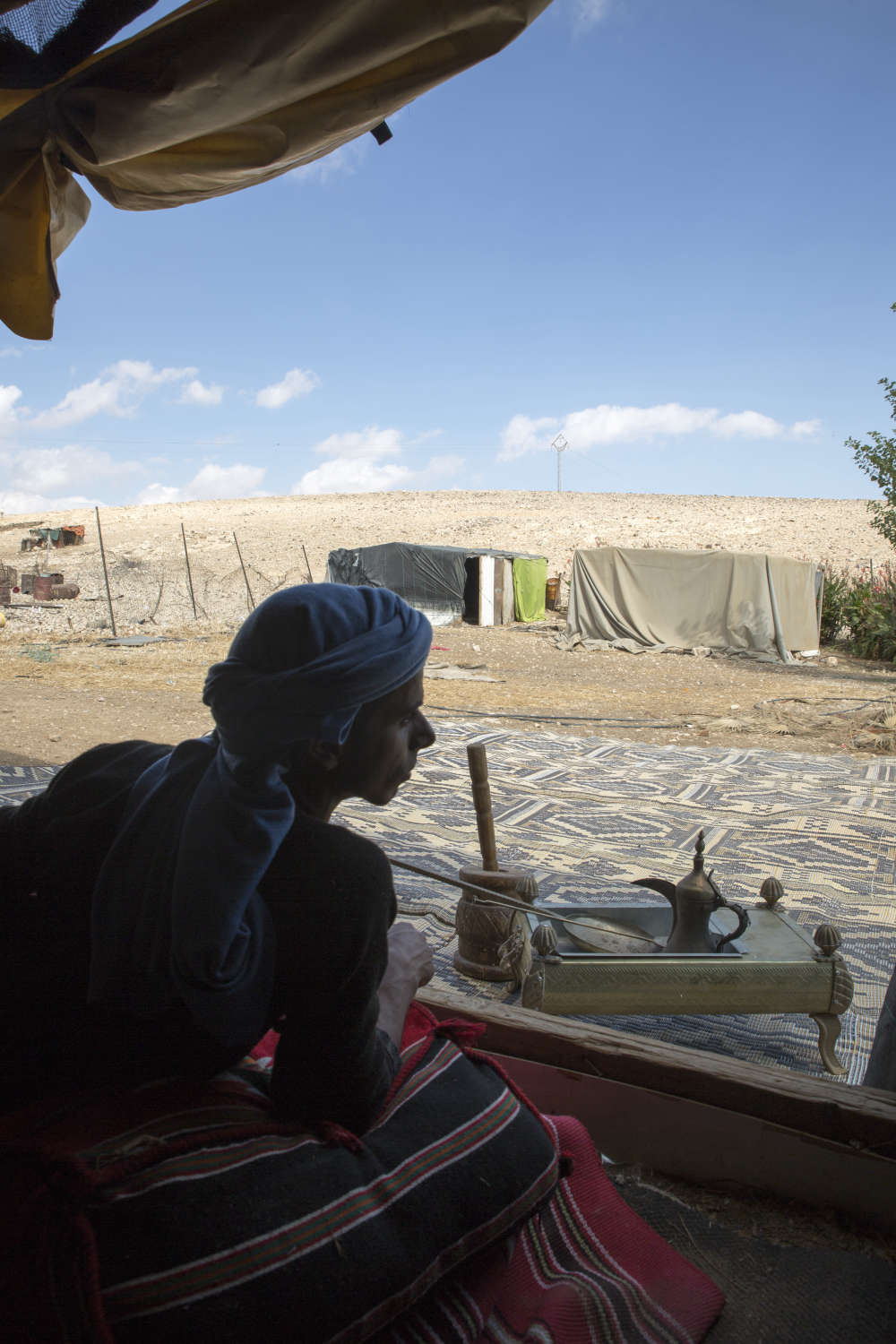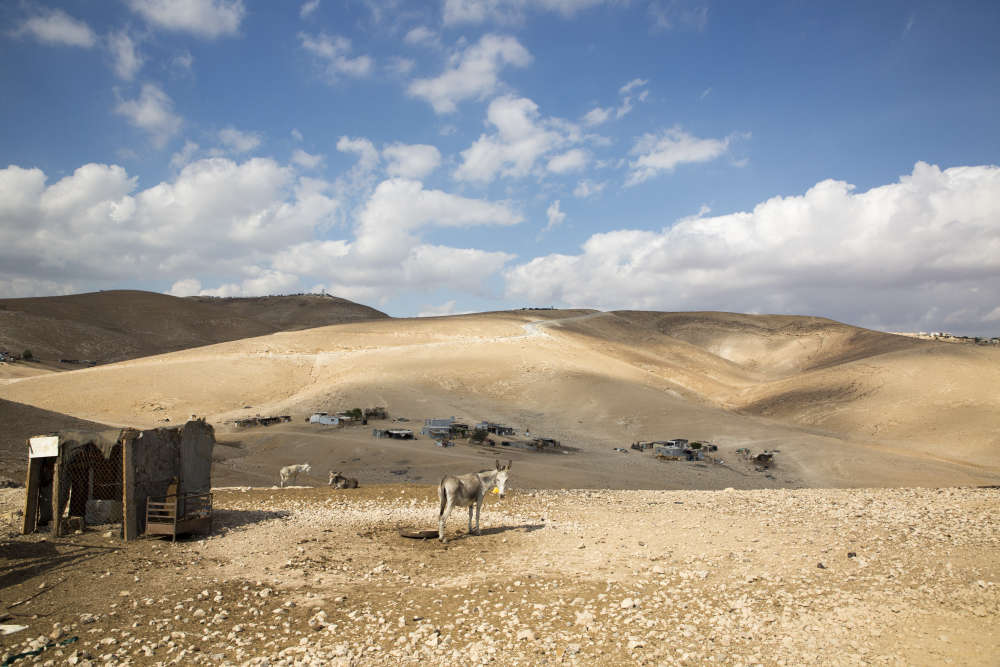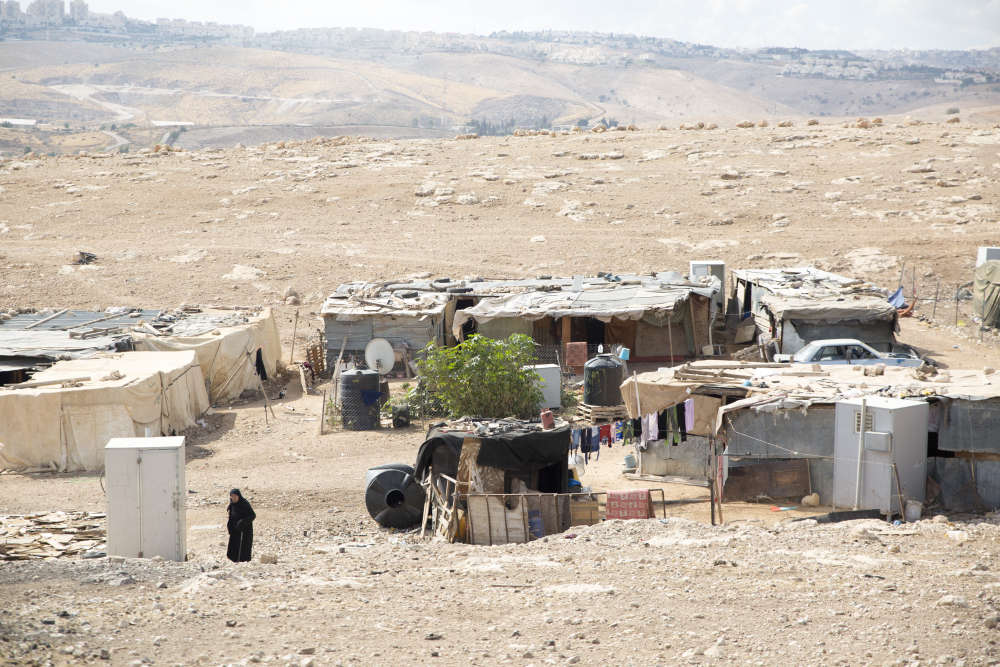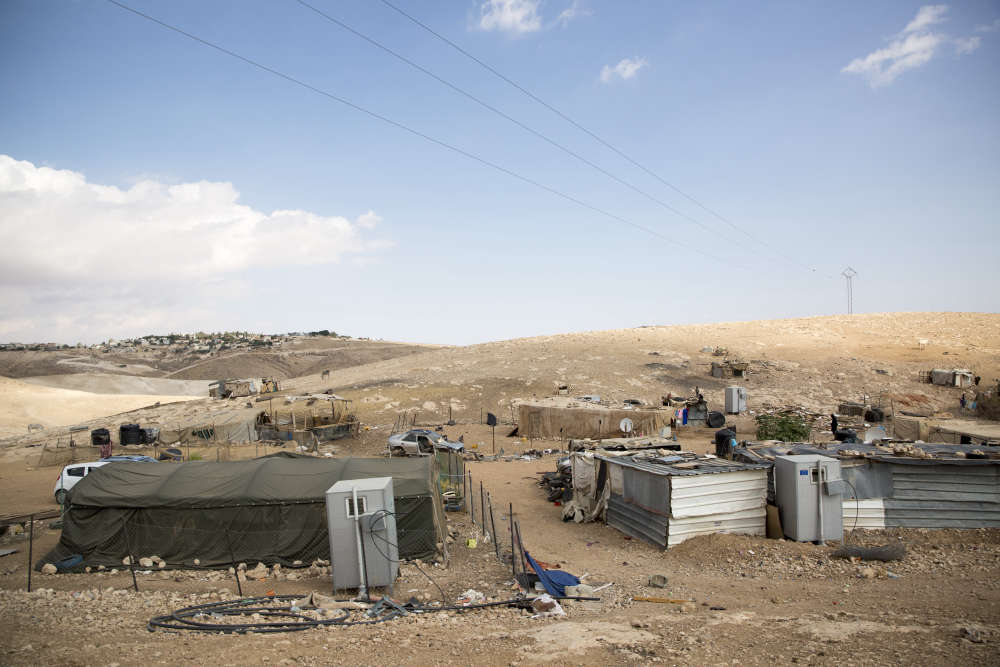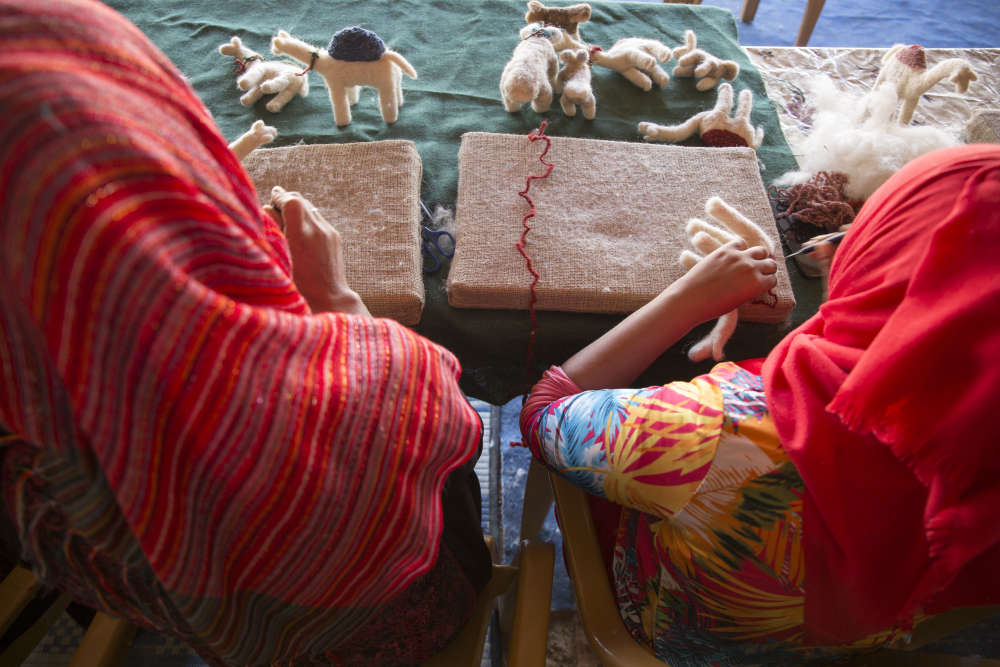Al-Khan al-Amar is an area in Al-Bariyyat al-Quds (Jerusalem Wilderness), located on the eastern slope of Jerusalem that descends towards the Jordan Valley. It is home to 257 Bedouin families (approximately 2,500 people) of the Jahalin Tribe, who live in six small communities: At-Tabana, Al-Mehtwish, Al-Kurshan, Abu Falah, Wadi Sidr, Abu Helu. Abu Helu community, along with the only school in the area, is currently threatened with imminent demolition.
The Jahalin people arrived in various parts of the West Bank in the early 1950s, after being uprooted from their ancestral home of Tel Arad in the Negev, with the creation of the State of Israel in 1948. While being registered with UNRWA as refugees, they opted to live in an open area instead of in the newly built camps in order to maintain their lifestyle and livelihood. After moving to Al-Khan al-Ahmar, they made an agreement with landowners from the neighboring village of Anata; the Bedouins were permitted to live and graze on the land and would migrate seasonally when the villagers used it for farming.
The Jahalin’s livelihood in Al-Khan al-Ahmar would be safeguarded over the next few decades. In keeping with tradition, they lived in small communities that were clustered around the families, and they grazed their livestock freely, having access to three springs in the nearby Wadi al-Qelt (Ain Fara, Ain Fawwar, Ain Qelt). They traded their flocks and dairy products at markets in Jerusalem, which was within easy reach. Families boasted hundreds of heads of livestock and thrived in the trade that was rooted in their heritage.
The Israeli occupation of the West Bank in 1967 and the subsequent land appropriation and settlement building resulted in a drastic change of life in Al-Khan al-Ahmar. The Bedouin communities became increasingly penned in within small pockets of land, and the pasture and springs were now off limits as part of military zones, natural reserves, and settlements. Anata villagers, being barred from using their own land, ceased their seasonal farming. Jerusalem markets became inaccessible due to the Separation Wall and military checkpoints. The Jahalin people gradually lost their traditional livelihood, and many have resorted to becoming laborers in urban areas. Today, their flocks, if any remain, rarely reach one hundred heads and are almost entirely for domestic consumption.
Located in Area C and within the expansion plan of Ma’ale Adumim settlement, Al-Khan al-Ahmar is particularly vulnerable to the threat of demolition and displacement. The traditional Bedouin culture and identity hang in the balance as the communities remain steadfast in their resistance against forcible transfer to semi-urban confinements designated by the Israeli army. Also precarious is the viability of any Palestinian state should this beautiful area be swallowed up by the settlements and the West Bank be dissected into two disconnected halves.
To visit Abu Helu (the school community), contact Eid Khamis, the head of the community, at 052-332-9350. For information on Bedouin Silver Tent Association, including handicrafts, contact Abu Suleiman Al-Kurshan at 052-266-2010, bedouin.s.t@gmail.com.

